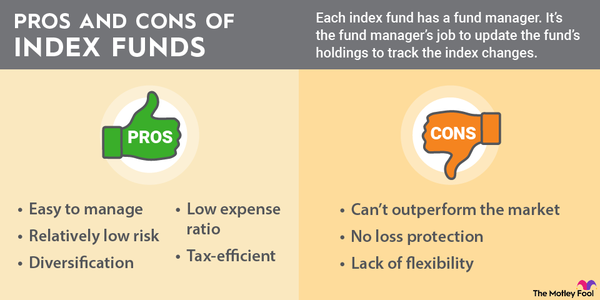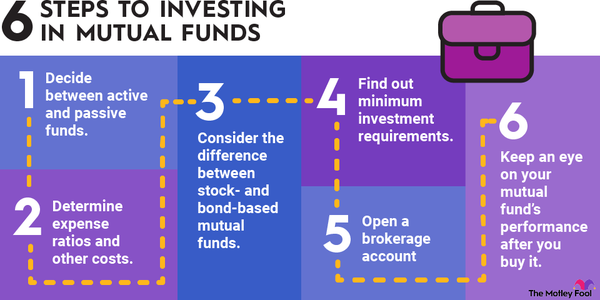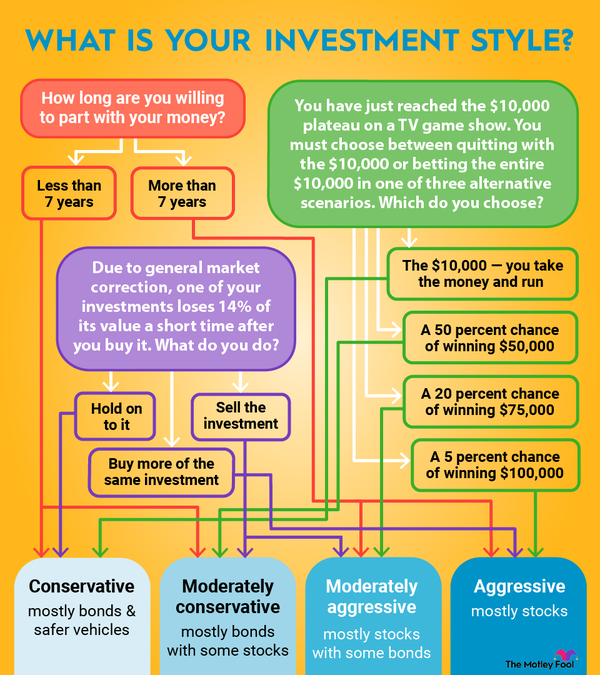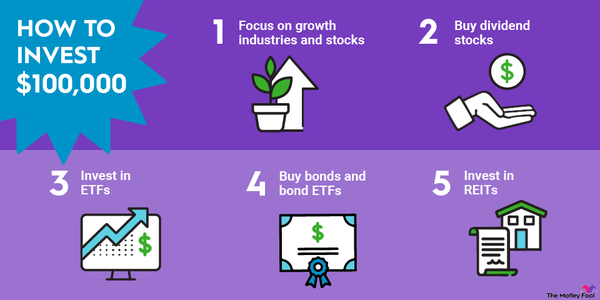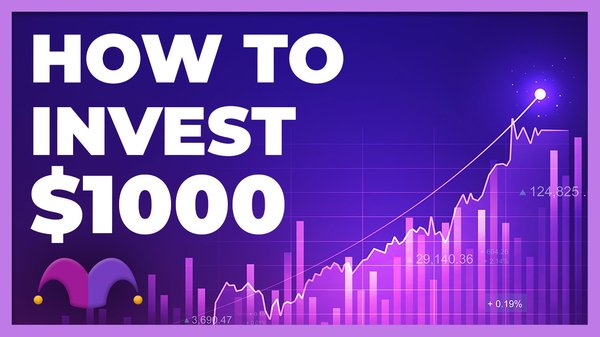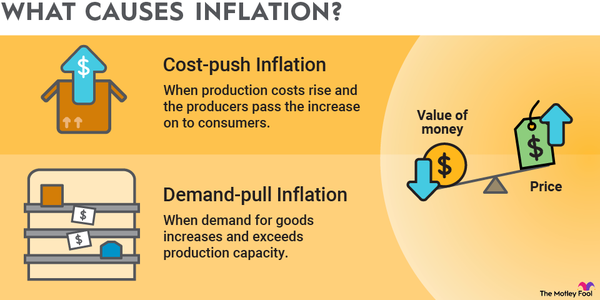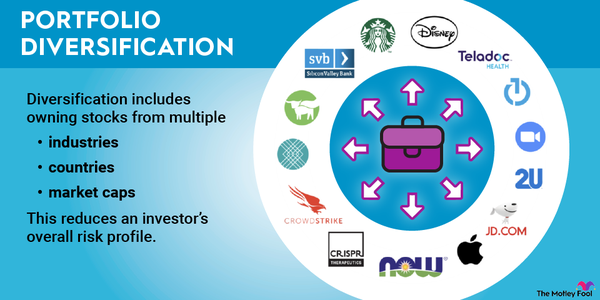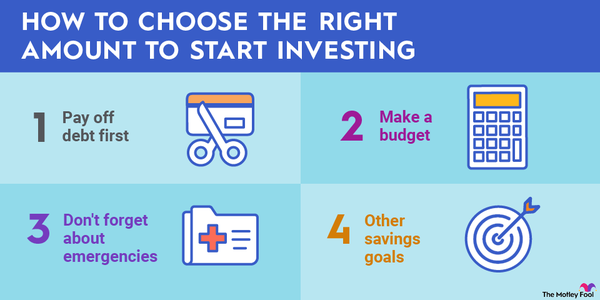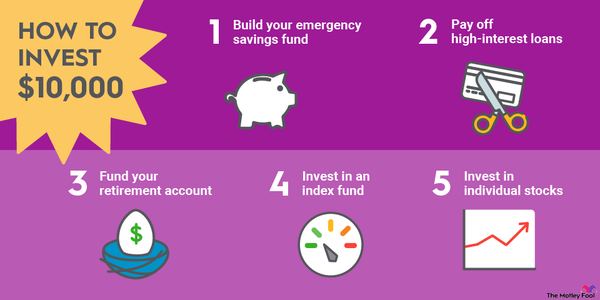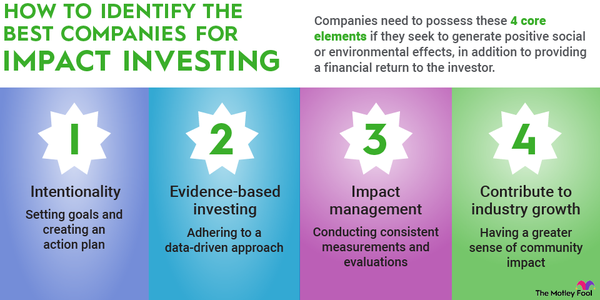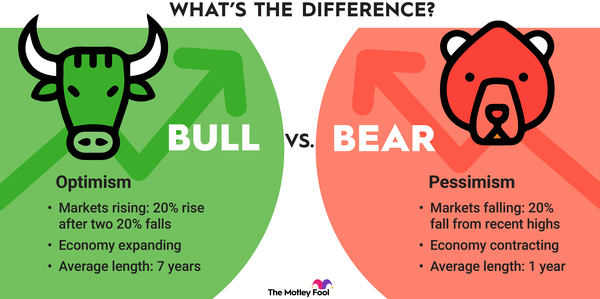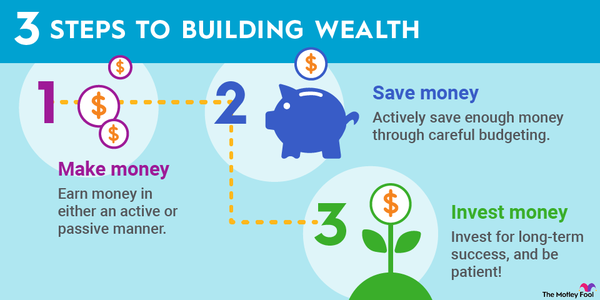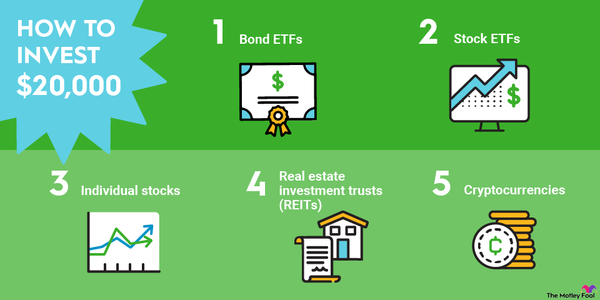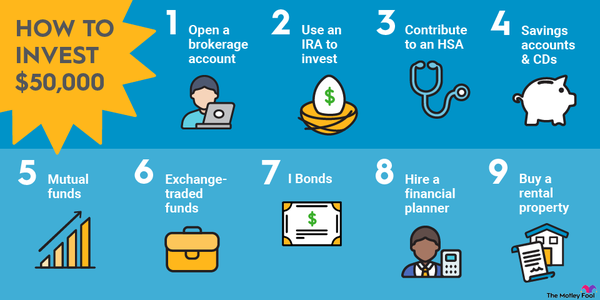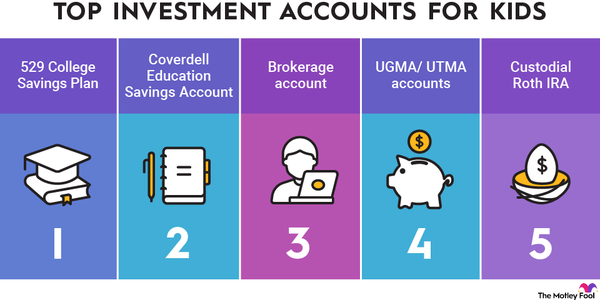Investing can change your life for the better. But many people mistakenly think that unless they have thousands of dollars lying around, there's no good place to put their money. The good news is that's simply not the case. You can start investing with $100 or even less.
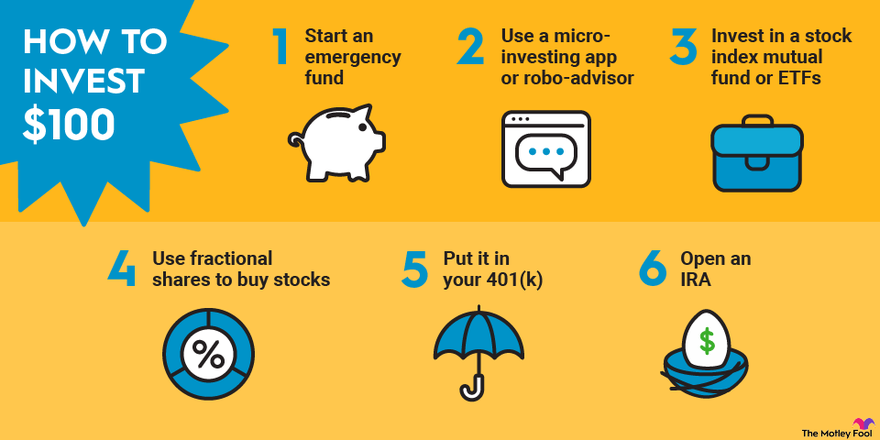
The most important thing -- and the way to reach those larger sums -- is just to get started, no matter how large or small your investment dollars are at the beginning. In this article, you'll learn six great ways to invest a few hundred dollars. By putting your money in one or more of these categories based on your short- and long-term goals, you can start investing your way toward long-term financial independence.
Getting started
Our six best ways to invest $100 starting today
You have $100 and are looking to put it to work. Here are our six best suggestions for how to do that:
- Start an emergency fund.
- Use a micro-investing app or robo-advisor.
- Invest in a stock index mutual fund or exchange-traded fund (ETF).
- Buy stocks in fractional shares.
- Put it in your 401(k).
- Open an individual retirement account (IRA).
Now, let's take a look at each of these in more detail.
1. Emergency fund
1. Start an emergency fund
It's understandable if your first thought was to start by taking your $100 and buying stocks, cryptocurrencies, or some other investment that could double, triple, or even increase your money tenfold. After all, the stock market has proven to be the simplest and most accessible way for people to build wealth over time.
Many cryptocurrencies have gained enormously in value over the past few years. But those assets are also volatile. They can fall very sharply in value with little or no warning and often without a clear reason. That's not a big deal if you're able to buy and hold and you own a diversified mix of investments where your winners can make up for a few losers. Time in the market will help you create wealth.
Buy & Hold Strategy
But what if you can't just hold those investments through a crash and must sell because you need the money? A little bad luck and timing could mean your $100 investment is now worth $80 or $50 or even less. That's why starting with money in savings is far more important than choosing investments that can be volatile.
Imagine if you were to lose your job or suffer an unexpected illness or accident that affected your income for weeks or even months. Having enough cash to cover your expenses for those weeks or months when you can't earn an income could keep life's unexpected events from damaging your financial plans.
Interest rates on savings accounts have also improved greatly in the past couple of years, meaning you can actually generate some modest returns. Just remember: The main goal of savings is not to create wealth but to protect yourself and your future wealth.
2. Simplify
2. Use a micro-investing app or robo-advisor
Once you have financial emergencies covered, you're in a much better position to start investing. If you like a fully automated approach that requires as little effort as possible, a robo-advisor may be just the ticket.
Robo-advisors use apps or websites to learn about your financial needs and then develop an investing strategy to meet them. They'll often use basic information, such as age, family size, income, and risk tolerance, to tailor a portfolio to your needs. Robo-advisors then handle all the details of selecting investments, making purchases and sales, and keeping you informed.
You could also use a micro-investing app, which allows investors to put small amounts of money to work over time. For example, a micro-investing app might allow you to round up your credit card purchases to the nearest dollar and invest the difference while also allowing you to deposit funds when you have extra money (like $100) to invest.
3. Invest in index funds
3. Invest in a stock index mutual fund or exchange-traded fund
Stocks are probably the most powerful wealth-building tool the average person can buy. However, it can be really hard to pick the winners, and if you're only investing $100 (or even less) at a time, it might not be worth the time and effort to choose individual stocks. This is where stock index funds come in.
When you invest in a stock index fund, you buy a piece of every company held in that index. In other words, if you invest $100 in the SPDR S&P 500 ETF Trust (SPY -1.25%), you'll own a tiny portion of all 500 companies in the S&P 500 Index. You get instant diversification and an investment with a long history of making money for anyone who can hold for a decade or longer.

It's also simple to do. You just put your money into a stock index mutual fund or a low-cost exchange-traded fund. You can choose from a wide variety of stock indexes, ranging from popular ones, such as the S&P 500 Index, to more specialized indexes.
There are some differences between ETFs and mutual funds, including how you buy and sell shares, the minimum investments, and the fees you can expect to pay. But the general idea behind both ETFs and mutual funds is that you can invest in the whole market or in selected parts of it through a single investment.
Once you've built a solid foundation of the best index-tracking funds, you can branch out and explore other investing options. But an index fund might well be all you'll ever really need to succeed with your investing. Interested in an index fund that costs more than $100? The next topic applies to ETFs, too.
4. Fractional shares
4. Use fractional shares to buy stocks
Index funds make stock investing easy, but picking your own stocks is a great way to earn even better returns. But until recently, the combination of brokerage commissions and stock prices kept anyone working with smaller sums of money on the outside looking in.
That's not the case anymore. Most brokers nowadays no longer charge commissions, and several major brokerages offer fractional share investing.
So, what exactly is fractional share investing? In short, instead of placing an order for a number of shares to buy, you tell your broker how many dollars you want to invest in a stock. For example, if you invested $100 in a stock that traded for $500, your brokerage account would show that you owned 0.2 shares of that company.
Looking to invest in index funds? Good news! Most brokers who offer fractional investing for stocks will also let you buy fractional shares of ETFs.
5. Invest in your 401(k)
5. Put it in your 401(k)
If you have a 401(k) or other employer-sponsored retirement plan, funding it could be an excellent use of your investment dollars. That's especially true if you haven't maxed out your employer's matching contributions. What's that? It means most employers will match some of the money you put into your 401(k).
Here's an example: Let's say your employer matches 50% of your contributions up to 3% of your pay. If you earn $50,000 per year, your employer will put $750 into your 401(k) for the first $1,500 -- 3% of your pay -- that you invest. That's a 50% gain on that $125 per month you invested.
There's even more to like about investing in your 401(k): lower taxes. Every dollar you contribute to your 401(k) is considered a pre-tax contribution, meaning you won't pay income tax on that dollar for the year you contributed it to your account. Better yet, your investments will grow tax-free until you start taking distributions in retirement.
Don't have an employer? Or do you work a side hustle or contract gig? Guess what? You can open a solo 401(k). You won't get the free money from an employer, but you can still take advantage of those pre-tax contributions and tax-free growth.
6. Open an IRA
6. Open an IRA
Have an extra $100 you want to invest for retirement above and beyond your company 401(k)? An individual retirement account (IRA) is a great way to go and can turn even small sums of money into a big nest egg over time.
Let's say you stash $100 a month in an IRA for 30 years. Based on the S&P 500's historical performance, the $36,000 you invest would be worth almost $180,000. That's the power of compounding gains over time.
Why an IRA? In a word, taxes. With a traditional IRA, you gain similar benefits as with a 401(k), reducing income taxes by cutting your taxable income each year you contribute while also growing your nest egg tax-free until you start taking distributions in retirement.
A Roth IRA gives you the same tax-free growth as a traditional IRA. But instead of getting to lower your taxable income each year you make contributions, distributions in retirement are 100% tax-free.
What to avoid
One way not to invest $100
One trap to be aware of is investing in penny stocks. Penny stocks are typically low-priced stocks of smaller or thinly traded companies.
While it may seem logical that tiny companies or stocks trading for just pennies per share (or even less) have the highest return potential, the reality is that the world of penny stocks is full of fraudulent companies and pump-and-dump schemes (think The Wolf of Wall Street). In short, if you're asking how best to invest $100 in penny stocks, the answer is, "Don't."
Related investing topics
Don't wait to invest
If you've been holding off on investing, don't wait any longer. Take your $100 and pick one -- or more -- of these six ways to put it to work. You'll be surprised at the difference it will make in the long run.
FAQs
How to invest $100 FAQs
How can I double my $100?
In a word, time. The S&P 500 (a popular index that's a good proxy for the stock market) has generated an average of 9.5% in compounded annual returns since 1929. That includes multiple major global wars, recessions, and a global pandemic.
Based on that math, a $100 investment in a broad-market index fund should double in value in about eight years. So, using the compounding power of time, your $100 would become:
- $200 in eight years
- $400 in 16 years
- $800 in 24 years
Make that $100 every month or week, and you can see how the math gets favorable.
How can I invest as little as $100?
The past several years have seen a lot of barriers to investing broken down. If you want to invest but only have $100 or even less, almost every online brokerage will be happy to take you as a customer. Do some research to find the best online broker for your needs.
How much money do I need to invest to make $100 a month?
That depends on a few factors. If you're looking for dividend income, you'd need to have enough capital to invest in dividend stocks with a yield high enough to generate that much income.
For example, as of Nov. 27, 2023, the S&P 500 generated a 1.62% yield (meaning $1.62 per year in dividends) for every $100 you invested today. So, it would take $74,064 invested in an S&P 500 index fund at recent prices to generate $100 per month in dividend income. Long term, you'd also see your investment gain in value, and the companies increase their dividends, growing your income payout.
You can also invest in a group of higher-yield dividend stocks, such as those held in the Vanguard Real Estate ETF (NYSEMKT:VNQ). With a yield of 4.5% at recent prices, a $26,664 investment would yield $100 in annual income and the same potential for capital and dividend growth over the long term.
Savings and money market funds are back on the menu for yield now. With many online banks offering yields of 4% and many money markets yielding over 5% recently, between $24,000 and $30,000 in savings or a money market would yield $100 per month at recent interest rates.
And while these amounts are safer in the near term and less volatile, interest rates -- which affect the future yield you earn -- may not be going up and could actually fall in coming years. You also don't get any capital appreciation from cash-based holdings, while the stocks of good companies become more valuable over time.












